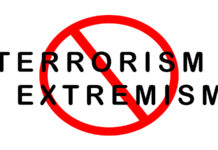The Covid-19 pandemic which reared its ugly head in the Wuhan province of China in December 2019 was quick to wreak havoc across the globe in the mere matter of a few months. In the current global realities a newly emergent virus isn’t necessarily restricted to arbitrary borders and thus, soon a localized disease outbreak became a raging pandemic. More than a year since the beginning of its onslaught, the impact of the disease is yet to abate. Newly emergent and increasingly virulent mutant strains such as the recent Delta variant, continue to engender new waves of infections and deaths. In this bleak reality, vaccines symbolize a much needed ray of hope.
By Avantika Menon
Global Vaccine Supply Chains
There are six main vaccines approved by the WHO that are being used widely in global distribution at present- Pfizer/BioNTech, Moderna, Johnson and Johnson, AstraZeneca/Oxford including Covishield by SII (Serum Institute of India), Sinopharm and Sinovac. In the early stages of their development and production, the Pfizer and Moderna vaccine supply chains were restricted to the US and Europe. The expansion of manufacturing facilities was also limited to these regions. It is only in May 2021, that BioNTech announced the construction of a manufacturing facility in Singapore, but this plant is expected to be functional only by 2023. Other such partnership deals regarding manufacturing and distribution have been struck with companies in China and South Africa as well, but have yet to bear any fruit. Unlike Pfizer and Moderna, AstraZeneca’s vaccine supply chains were more diversified and global from the initial stages only. AstraZeneca established partnerships with local manufacturers in several states and formed regional supply chains for its production and distribution. Most notably, it partnered with the SII, the largest vaccine manufacturer in the world and reached a landmark US$750 million agreement with Coalition for Epidemic Preparedness Innovations (CEPI) and Gavi to support the manufacturing and distribution of 300 million doses in addition to a licensing agreement geared towards supplying a billion doses to low-income countries. The supply chains for the Johnson and Johnson vaccine emerged in the United States and their production was expanded in collaboration with firms in Europe. The vaccine’s single shot dosage has immense potential for mass inoculation in low-income countries and thus there has been a movement towards steadfast expansion of facilities in other states. In a bid towards significantly expanding its manufacturing, Johnson and Johnson entered into an agreement with an Indian firm, Biological. E. as early as August 2020, but unfortunately several hiccups along the way have thrown a spanner in the works and the envisioned mass production of the vaccine is yet to materialise.
Vaccine Inequity
As early as February 2020, companies like Moderna had already begun the Phase 1 of their clinical trials for a Covid-19 vaccine, while other pharmaceutical giants like Jannsen, BioNTech, Oxford and Novavax were quick to follow [11]. Subsequently, regulatory bodies in the US and the UK authorized public use of the vaccines in December 2020, within a year of the vaccine development process. While this quick pace of vaccine development and distribution is a historically significant achievement, the vaccine availability has reflected the gaping inequities between developed and developing/underdeveloped states. Pre-pandemic, the global vaccine production was largely concentrated in Europe, India and North America. Naturally, the early vaccine availability was restricted to these production centres as well. States without indigenous vaccine manufacturing capabilities have to inadvertently depend entirely on vaccine imports and the whims of the vaccine manufacturers.
In an effort to reduce vaccine inequities, the Covid-19 Vaccines Global Access (COVAX) was launched in partnership by Gavi, CEPI, UNICEF and WHO. This multilateral set up aimed to guarantee fair and equitable access to Covid-19 vaccines by emerging as a major buyer of vaccines and distributing them (paid or in donations) to poor states which lack resources.Initially, COVAX vied to deliver approximately two billion doses of vaccines worldwide in 2021 and 1.8 billion doses to 92 low income countries by 2022. Unfortunately, COVAX has so far failed to deliver on its promises and “stands half a billion short of its goal”. While primarily established for ease of access to poorer countries, wealthier nations have bought several doses from COVAX for their own populations, putting a strain on the organization’s finite vaccine inventory. The non-profit continues to suffer from vaccine supply shortages and resource crunch. Although, all six WHO approved vaccines are viable for deliveries via COVAX, so far only the Pfizer and AstraZeneca vaccines [18] (with a recent inclusion of China’s Sinovac vaccine) have been used for distribution. In fact, AstraZeneca continues to have the greatest global reach with approximately 170 territories across the globe currently using the vaccine . The disruption of AstraZeneca vaccine exports from India due to the crippling second wave extended further pressure and caused supply disruptions for low-income African countries which are primarily dependant on COVAX for their vaccine supplies.
Quad’s Vaccine Partnership
The freshly relevant Quad grouping, held its first leaders’ summit virtually on 12 March 2021. A ‘Quad Vaccine Partnership’ was announced at this high level meeting which sought to facilitate cooperative action geared towards expanding the manufacturing of safe and effective Covid-19 vaccines in 2021. It was announced that the Quad partners will work in cohesion with existing multilateral mechanisms such as COVAX and WHO and will endeavour towards the provision of vaccines to countries across the Indo-Pacific region.
Apart from the creation and supply of vaccine deliverables, it was also announced that the Quad partners would work towards strengthening ‘last-mile’ vaccinations. The last mile logistics of Covid-19 vaccinations include communication and management of the vaccinations. Converting vaccines into vaccinations requires credibility and trust among the general public, ease of access, appropriate vaccine storage facilities and cold chains, and lastly, viable vaccination site availability. In this regard, it was announced that Australia will provide US$77 million for the provision of vaccines and last mile delivery support, particularly focusing on Southeast Asia. Australia also has existing commitments of US$407 million for regional vaccine access and health security which strives to provide complete vaccine coverage to nine Pacific-island countries and Timor Leste. Additionally, Japan would aid developing countries with vaccine purchases and offer cold-chain support with a grant-aid of US$ 41 million . The Quad countries also officially launched a ‘Quad Vaccine Experts Group’, which will work towards providing essential scientific input and designing efficient implementation plans for the Quad’s vaccine efforts.
China’s Vaccine Diplomacy
Chinese vaccines were the first to reach poorer countries and were responsible for kick-starting their inoculation programmes against Covid-19 [33]. China has provided vaccines to 112 countries, spread across four geographical regions. Asia-Pacific has received the highest amount of Chinese vaccines out of all these regions. So far, 572 million doses have been provided in this region including 38 million in terms of donations [34]. Sinovac and Sinopharm are the leading Chinese vaccine manufacturers with Sinovac leading vaccine sales (717 million doses sold) and Sinopharm leading vaccine donations [35]. China categorizes its vaccines as ‘public goods’ and its vaccine diplomacy is largely bilateral [36]. Under the aegis of the ‘Health Silk Road’ China has been making a push for global health leadership [37]. China’s geopolitical objectives are parcelled within its vaccine diplomacy which is evident as a majority of its vaccine recipients are coincidentally also part of the Belt and Road Initiative (BRI) [38]. Also, it is interesting to note that although China has donated several vaccines, a large part of its vaccine exports have been paid for by the recipient countries. The exported volume of vaccine doses has been 100 times the volume of donations [39]. Apart from its predominant bilateral negotiations, China has also delivered several vaccines to states in Africa via COVAX [40]. China’s active posturing as a provider of public goods and as a global health leader have been construed as attempts at framing itself as a “solution to–rather than the cause of– the pandemic”.
As India’s vaccine diplomacy faltered under the strain of the devastating second wave, countries in South Asia had nowhere else to turn to, but towards China for their vaccine requirements. And China happily delivered. China’s top ten deliveries include countries like Indonesia (250m), Pakistan (58m), Philippines (40m), Bangladesh (34m), Cambodia (29m), Thailand (27m) and Sri Lanka (26m), all situated within India’s neighbourhood.
Regardless of vaccine preferences, fact of the matter remains that large parts of the world still require vaccines and matters of efficacy aside, vaccines like Sinovac and AstraZeneca can be stored in standard refrigerators at 2-8 degree Celsius whereas Moderna needs to be stored at -20 degrees Celsius and Pfizer at -70 degrees Celsius. Thus, Sinovac and AstraZeneca are better candidates for inoculating populations in developing countries that lack facilities to store large amounts of vaccines at sub-zero temperatures.
The Quad Leaders’ Summit
The highly anticipated first physical Quad Leaders’ summit was recently held on 24 September 2021 at Washington D.C. Following the launch of the ambitious Quad Vaccine Partnership at the March Summit, several key announcements were made reiterating Quad’s commitment towards equitable access to vaccines in the Indo-Pacific and the world. The grouping has already delivered 79 million vaccine doses to countries in the Indo-Pacific and has additionally pledged to donate over 1.2 billion Covid-19 vaccine doses globally. Expanded manufacturing facilities at Biological E. in addition to India’s resumption of vaccine exports from October 2021 will help reduce the current vaccine supply gap. According to India’s Health Minister, Mansukh Madaviya, “The country’s monthly vaccine output has since more than doubled and is set to quadruple to more than 300 million doses next month” out of which only the surplus will be exported. India’s vaccine exports under its resumed Vaccine Maitri initiative will prioritize COVAX and its neighbourhood. Other key announcements in the summit included the provision of a US$ 3.3 billion Crisis Emergency Support Loan by Japan for vaccine procurement in regional countries and a US$ 212 grant aid from Australia for vaccine purchases in Southeast Asia and the Pacific. Australia also reiterated its commitment towards coordinating Quad’s last mile delivery efforts and allocated US$ 219 million for the same. To facilitate quantitative monitoring of the Quad’s vaccine efforts, the Quad Partnership Covid-19 Dashboard was also launched. According to the interactive dashboard, in addition to the 79 million vaccine doses, US$894 million of financial and technical support has also been delivered to countries in the region. While at present India is at the lower end of the vaccine dose deliveries spectrum, Johnson and Johnson’s manufacturing deal with Biological E. can provide added heft to Quad’s vaccine outreach. Reports suggest that Indian companies have “set up capacity to produce nearly three billion Covid-19 vaccine doses a year” . With the third quarter of 2021 a plethora of vaccines with Indian supply chains are coming into play. In addition to the existing Covishield (SII) and Covaxin (Bharat Biotech) the Russian Sputnik vaccine (Dr. Reddy’s) and Zydus Cadila’s three shot vaccine will be entering the market very soon. The SII is also going to produce Novavax which is scheduled for release in the fourth quarter of 2021.
Viruses are incredibly wily creatures that continue to mutate. In the fight against Covid-19, the persistence of vaccine inequities which render large swathes of the global population unvaccinated, leave the virus with plenty of space to develop deadlier mutations that can eventually prove dangerous for even the ones who have been vaccinated. Tackling vaccine inequities is thus a shared responsibility with global consequences, and it is imperative that capable states stand up to this challenge.
This article first appeared in www.vifindia.org and it belongs to them.












